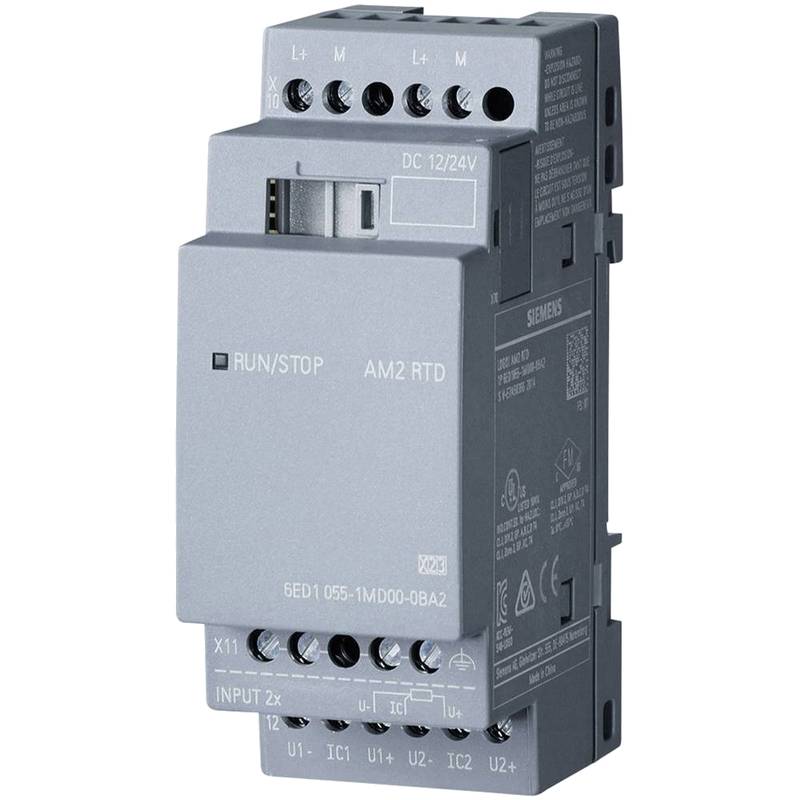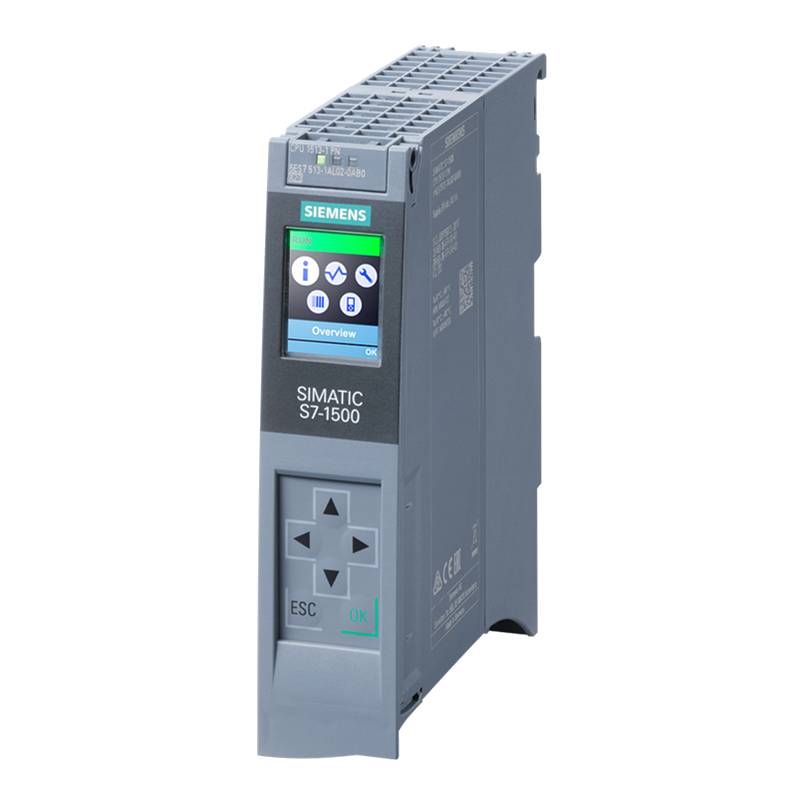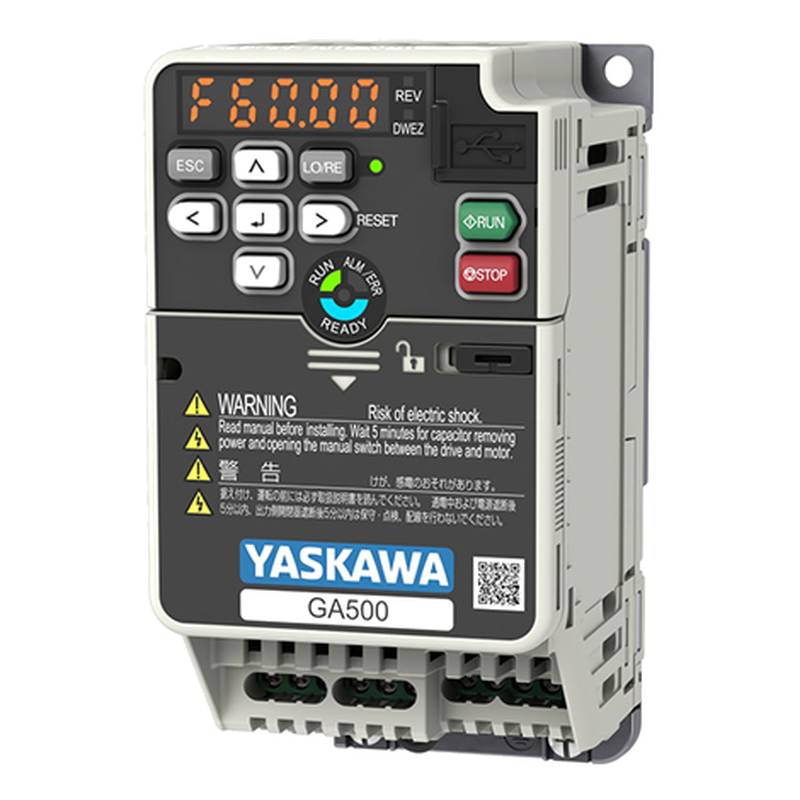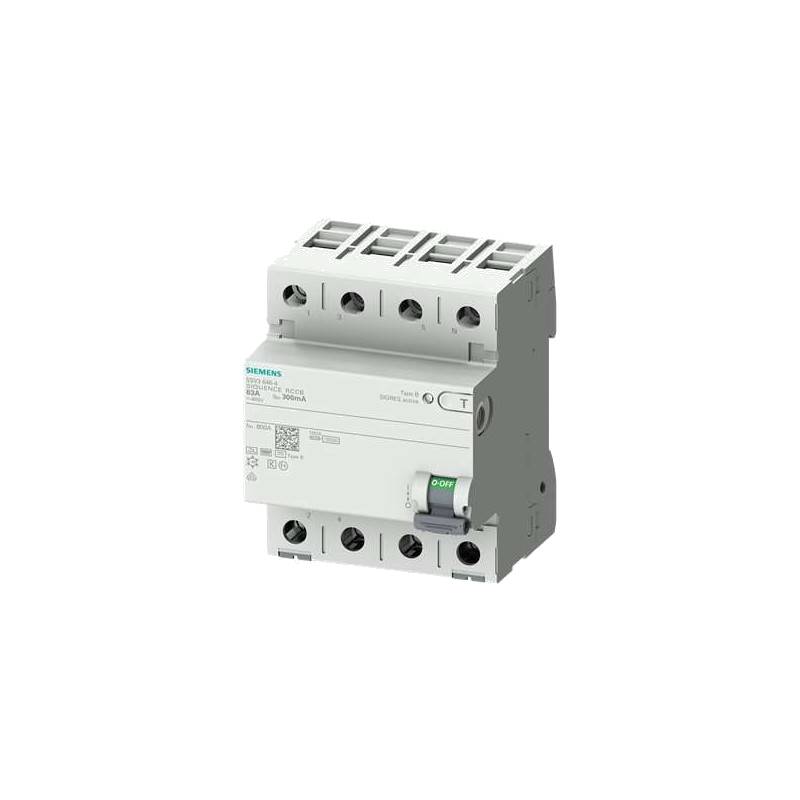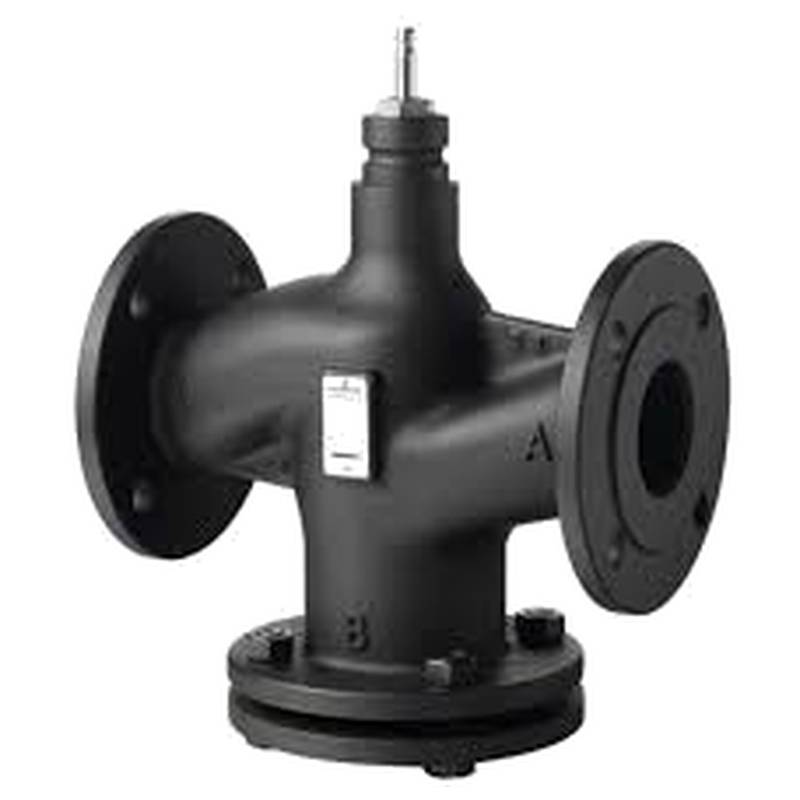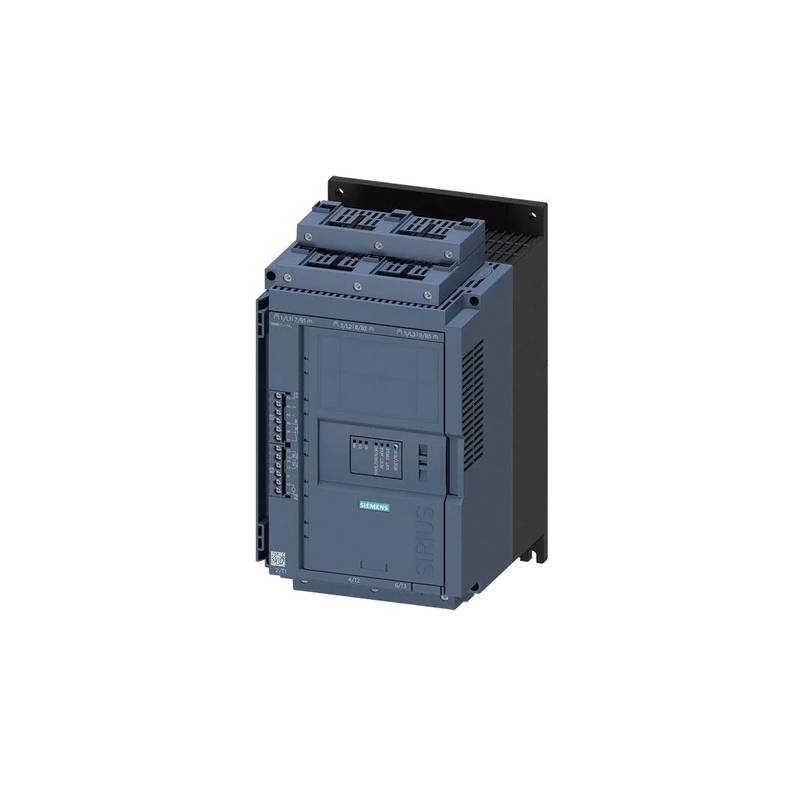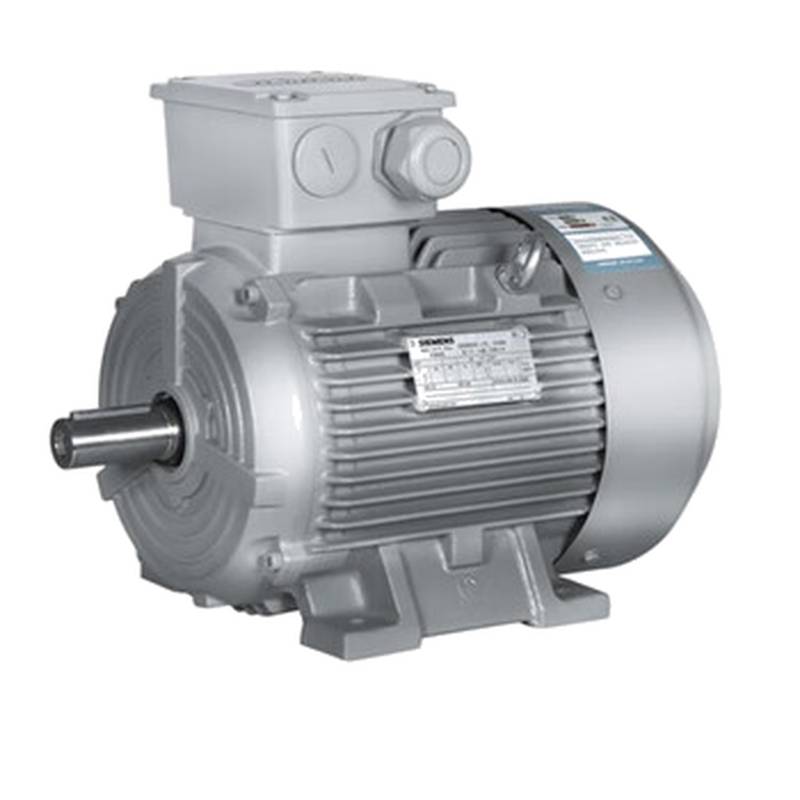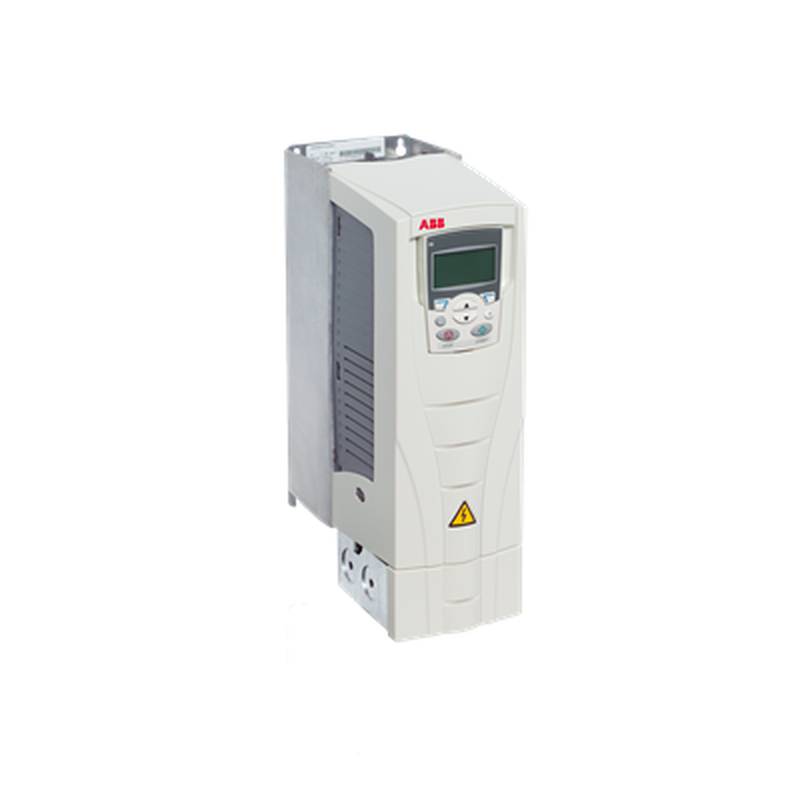
The Siemens 6ED1055-1MD00-0BA2 8DO Digital Output Control Module stands as a robust solution for expanding the control capabilities of Siemens LOGO! and S7-1200 systems. This module is engineered for reliability and efficiency, offering eight digital outputs to manage a variety of industrial processes. Its key advantages lie in its straightforward integration, high-performance output switching, and adherence to stringent industrial standards, making it a preferred choice for automation engineers. Critical technical parameters include a 24V DC supply voltage and a maximum switching current of 2A per channel, ensuring compatibility with a wide range of actuators and devices.
Product Specifications
| Feature | Specification |
| :---------------- | :----------------------------------------------- |
| Product Type | Digital Output Module |
| Manufacturer | Siemens |
| Model Number | 6ED1055-1MD00-0BA2 |
| Number of Outputs | 8 Digital Outputs |
| Output Type | Relay Output |
| Output Voltage | 24V DC |
| Max. Switching Current (per channel) | 2 A |
| Max. Switching Frequency | 30 Hz |
| Operating Temperature | 0°C to 55°C |
| Dimensions | Varies by specific enclosure, typically compact |
| Protection Rating | IP20 |
| Communication Interface | Compatible with LOGO! and S7-1200 platforms |
Core Features & Market Positioning
The Siemens 6ED1055-1MD00-0BA2 distinguishes itself through its high-quality relay outputs, offering galvanic isolation between channels and the control circuit, which enhances system safety and prevents interference. This robust design ensures longevity and reliability in demanding industrial environments. Its market positioning is firmly rooted in its seamless compatibility with Siemens' established automation ecosystems, such as LOGO! and S7-1200, providing a cost-effective and efficient method for expanding I/O capacity without requiring a complete system overhaul. This focus on interoperability and dependable performance makes it a strong contender for small to medium-sized automation tasks where Siemens hardware is already deployed.
Key Application Scenarios
This digital output module is ideally suited for applications requiring the control of actuators, indicators, and other devices that operate on a 24V DC supply. Common scenarios include managing pumps, valves, motors, signal lamps, and solenoids in manufacturing processes, building automation, and material handling systems. For instance, in a packaging line, the 6ED1055-1MD00-0BA2 can control various pneumatic valves to actuate conveyor belts or robotic arms. In HVAC systems, it can switch on or off fans, heating elements, or cooling compressors based on programmed logic. Its versatility allows it to be employed across diverse sectors, from food and beverage production to water treatment plants.
Practical System Integration Guidance
Integrating the Siemens 6ED1055-1MD00-0BA2 is designed for simplicity. The module connects directly to the base unit of a LOGO! or S7-1200 PLC via its expansion bus, typically requiring only a few clicks in the respective programming software. Wiring involves connecting the 24V DC power supply to the module's power terminals and then connecting the individual digital outputs (Q1-Q8) to the field devices. Load connections should adhere to the maximum switching current of 2A per channel. When using with LOGO!, the module is addressed as an expansion module within the LOGO!Soft Comfort software, and its outputs are directly mappable to program logic. For S7-1200, it's configured as an I/O module within TIA Portal. Ensuring proper grounding and avoiding voltage spikes are crucial during installation.
Operation and Risk Mitigation
Safe operation of the Siemens 6ED1055-1MD00-0BA2 relies on adhering to its specified electrical limits. Exceeding the 2A per channel switching current can lead to premature relay failure or damage. Users must ensure the connected loads do not draw more current than the module can safely handle. For systems requiring higher currents, external relays or contactors should be employed, controlled by this module. Protection against short circuits and overloads at the power supply level is also recommended. Faults, such as a failed output, are typically indicated through the PLC's diagnostic functions or status LEDs on the module itself, enabling prompt troubleshooting. Always refer to the official Siemens documentation for detailed safety guidelines and error code interpretations.
Scalability & Long-Term Value
The Siemens 6ED1055-1MD00-0BA2 offers significant long-term value through its scalability and integration capabilities. As automation needs grow, additional Siemens expansion modules can be seamlessly added to the base PLC, allowing for a flexible and cost-effective expansion of digital I/O points. Its compatibility with established Siemens platforms ensures that systems can be upgraded or expanded without requiring a wholesale replacement of existing infrastructure. Furthermore, this module can be integrated into larger, more complex automation architectures, including those leveraging Siemens' Industrial IoT (IIoT) solutions, enabling remote monitoring, data acquisition, and advanced diagnostics for enhanced operational efficiency and predictive maintenance strategies.
Frequently Asked Questions
Q1: What is the maximum load current for each digital output on the Siemens 6ED1055-1MD00-0BA2?
The Siemens 6ED1055-1MD00-0BA2 module is designed to handle a maximum switching current of 2A per digital output channel. This specification is critical for selecting appropriate actuators and ensuring the longevity of the module.
Exceeding this 2A limit for any individual output can lead to overheating, premature wear of the relay contacts, or permanent damage to the module itself. Therefore, it's imperative to verify the current draw of the connected devices before installation.
If your application requires switching loads greater than 2A, it is recommended to use external relays or contactors that are controlled by the 6ED1055-1MD00-0BA2 module, thus protecting the module from overload.
Q2: Can the Siemens 6ED1055-1MD00-0BA2 be used with PLC systems other than Siemens LOGO! and S7-1200?
The 6ED1055-1MD00-0BA2 is specifically designed and optimized for seamless integration with Siemens LOGO! and S7-1200 programmable logic controllers. Its communication protocols and physical connectors are proprietary to these platforms.
While technically it might be possible to interface with other systems through custom hardware or complex gateway solutions, it is not a standard or supported configuration. Such attempts would likely void warranties and lead to significant engineering challenges.
For optimal performance, reliability, and ease of use, it is strongly advised to use the Siemens 6ED1055-1MD00-0BA2 exclusively within its intended Siemens LOGO! or S7-1200 environments.
Q3: What is the voltage rating for the digital outputs of the 6ED1055-1MD00-0BA2 module?
The digital outputs of the Siemens 6ED1055-1MD00-0BA2 module are rated for switching 24V DC loads. This is a common voltage level used for industrial actuators, sensors, and control devices.
It is important to note that this module is designed for DC applications only. Attempting to switch AC loads or voltages outside the specified 24V DC range can cause severe damage to the module and pose safety risks.
Always ensure that the voltage of the devices being controlled is within the 24V DC specification to guarantee proper operation and prevent potential equipment failure or hazards.
Q4: How do I wire the Siemens 6ED1055-1MD00-0BA2 to my external devices?
Wiring involves connecting the 24V DC power supply to the module's power input terminals. Subsequently, each of the eight digital outputs (Q1 through Q8) should be wired to the corresponding input terminal of your external device, such as a relay coil, solenoid valve, or indicator lamp.
Ensure that the positive (+) and negative (-) terminals of your 24V DC supply are correctly connected to the module and that the load is wired in series with the output terminal and the return path to the power supply. Adhere strictly to the maximum 2A current limit per output.
Always refer to the detailed wiring diagrams provided in the Siemens technical documentation for the specific PLC system (LOGO! or S7-1200) you are using, as connection points and conventions can vary slightly.
Q5: What is the typical response time or switching speed of the Siemens 6ED1055-1MD00-0BA2?
The Siemens 6ED1055-1MD00-0BA2, being a relay output module, has a typical switching time in the range of milliseconds. This is generally suitable for most standard industrial control applications.
For applications requiring extremely fast switching speeds, such as high-frequency pulse generation or precise timing critical to microsecond accuracy, electronic (transistor) output modules might be a more appropriate choice.
Always consult the product's detailed technical specifications for precise switching time values, as this parameter is crucial for applications with stringent dynamic response requirements.
Q6: Does the Siemens 6ED1055-1MD00-0BA2 require a separate power supply?
Yes, the Siemens 6ED1055-1MD00-0BA2 digital output module requires a 24V DC power supply for its operation. This power is typically supplied externally and connected to the designated power input terminals on the module.
The PLC base unit also requires its own power supply. The module draws its operational power from this external supply, not directly from the PLC's internal bus, although it communicates with the base unit via the expansion bus.
Ensure the external power supply is adequately rated for the module's consumption and is stable to guarantee reliable performance of the digital outputs.
Q7: What are the dimensions and mounting requirements for the 6ED1055-1MD00-0BA2?
The Siemens 6ED1055-1MD00-0BA2 module is typically designed for DIN rail mounting, which is standard in industrial control cabinets. Its dimensions are compact, allowing for space-efficient integration alongside other automation components.
Specific dimensions will vary slightly depending on the exact series or enclosure type, but they are engineered to fit standard panel layouts. Always check the product datasheet for precise measurements and mounting instructions.
The module's IP20 protection rating means it should be installed in an environment protected from dust and moisture, typically within a control panel or enclosure.
Q8: Can I use the Siemens 6ED1055-1MD00-0BA2 for high-power DC switching applications?
No, the Siemens 6ED1055-1MD00-0BA2 is rated for a maximum switching current of 2A per channel. It is not suitable for directly switching high-power DC loads that exceed this limit.
For loads requiring higher currents (e.g., large motors, high-power heaters), you must use an intermediate relay or contactor. The 6ED1055-1MD00-0BA2 would then control the coil of this external switching device.
Overloading the module's outputs can lead to component failure, fire hazards, and damage to both the module and the connected equipment.
Q9: How is the Siemens 6ED1055-1MD00-0BA2 configured and programmed?
Configuration and programming of the 6ED1055-1MD00-0BA2 module are performed using Siemens' respective engineering software. For LOGO!, this is LOGO!Soft Comfort, and for S7-1200, it's TIA Portal.
In the software, the expansion module is added to the PLC's hardware configuration. Its digital outputs then appear as available I/O points within the programming environment, allowing you to assign them to logic functions, timers, or other program blocks.
The module itself is passive; its behavior is entirely determined by the logic programmed into the associated LOGO! or S7-1200 base unit.
Q10: What troubleshooting steps should I take if a digital output is not functioning?
First, verify that the module is receiving the correct 24V DC power supply and that the PLC is powered on and operating correctly. Check the wiring connections to ensure they are secure and correctly terminated at both the module and the load.
Examine the module's status indicators or the PLC's diagnostic buffer for any fault codes or error messages that might pinpoint the issue. Also, confirm that the program logic is commanding the output to be active and that the output is not being limited by the 2A current rating.
If the issue persists, test the output with a known good, low-current load to rule out a problem with the connected device. If the output still fails, the module itself may require replacement.














